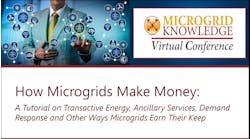Duke University brain science researchers are hoping to use electronics they developed for non-invasive brain stimulation to revolutionize energy storage technology, making batteries safer, more efficient and less expensive.
The idea to apply brain science technologies to battery technology came from Stefan Goetz, an assistant professor of psychiatry and behavioral science, electrical engineering and neurosurgery, along with a colleague, Angel Peterchev, associate professor in psychiatry and behavioral sciences.
For more than a decade Goetz has been creating electronics for non-invasive brain stimulation that allow signals from outside the brain to be processed and acted on inside the brain, he explained.
However, he also had some experience with cars. “I started my Ph.D with an advisor who was a power engineer who worked on drives for vehicles,” he said. “I knew a little about it and recognized the problems with batteries. It appeared to me they could be solved if you modified some of the circuits.”
He and his colleagues started looking for funding. They received funding from Duke University’s Energy Research Seed Fund for developing a prototype battery and conversion system, $500,000 from the National Science Foundation for developing, along with other researchers, control systems to optimize use of the battery system, plus car-part donations from Toyota and BMW, said Goetz.
The brain stimulation techniques that launched the project involve using a strong magnetic field to create a current that stimulates the brain. The Duke brain researchers need up to 6,000 amps to make the current run properly through the brain stimulation coil. By comparison, a typical household electrical outlet produces about 10 to 20 amps, he said. The researchers need short, powerful zaps — 2,000 to 3,000 volts for less than a second.
The brain stimulation requires both power and speed, which aren’t readily available in traditional products used in neuroscience, he said. So Goetz and his associates created a highly modular design of small circuits to do the job. It breaks down power and speed into smaller units.
Goetz and Peterchev believed the system could be applied to batteries used for grid storage and electric vehicles to help solve some nagging cost, efficiency and safety issues.
EVs have high-voltage battery packs, generally in the bottom of the car, along with electronics that convert DC power to 12-volt power and three-phase power. The electronics component reshapes the current, switching it on and off before it goes to a car. Traditionally, battery packs in EVS always emit at full voltage, 400 volts, but switch on and off to create the needed volts and amps, Goetz explained.
Limited by weakest cell
Under this traditional system, two batteries from the same batch can behave differently. That means that the performance of a pack of batteries in an EV or grid storage system is limited by the weakest cell, which can affect all the cells’ performance, heat production and aging, said Goetz.
Battery safety is also a concern due to the high voltage of the batteries. “If firefighters find an electric car damaged by a tree, can they approach it?” Goetz said. “Are the batteries still in their container, or will firefighters get hurt if they touch the car?”
Efforts to ensure that manufacturing and driving electric EVs is safe increases the cost and time associated with producing them, he noted.
“Producing electric car or grid storage is not trivial; at some point you have a high-voltage system and can’t touch it. It gets dangerous. You need safety equipment and people well trained. This makes things harder and is more costly,” Goetz said.
Goetz and his associates’ electronic system for controlling batteries solves both issues he says.
[clickToTweet tweet=”Brain Research Tools Could Help Revolutionize #Energy Storage Technology” quote=”Brain Research Tools Could Help Revolutionize Energy Storage Technology”]
The team’s system reduces the electronics required to convert power. It creates a modular battery with a circuit that arranges 16 small packages of batteries (each that have an output of up to 40 volts). The output follows a sinuous wave, which means it peaks and subsides, rather than delivering a single output.
By arranging a battery pack into smaller units, researchers found that they can produce the amount of voltage needed — either high or low. And when the battery is off, it’s possible to touch it safely. What’s more, if it catches fire, it’s okay to safely pour water over it without electric hazards, Goetz said.
Off-the-shelf technologies can’t provide these advantages, he said.
“We can bring these smaller battery packs into ideal load conditions. That’s why we don’t have the limitations of the weakest cell,” he said. If one cell is damaged, the system automatically reconfigures the system to get the most out of the pack.
Next for the energy storage technology
Goetz is now looking for partners to help commercialize this energy storage technology. He said that today’s focus on renewable energy may help him accomplish the goal.
“Grid storage is interesting from a technological viewpoint, but is not yet profitable. Energy from large power plants has been too cheap and nobody has wanted to pay for storage sitting there. But that’s changing, with a lot of renewable energy in the system, people start to value that someone can handle fluctuations and provide backup,” he said.
Read more stories about energy storage technology. Subscribe to the Microgrid Knowledge newsletter. It’s free.







